
Leda is a large, dark main-belt asteroid that was discovered by French astronomer J. Chacornac on January 12, 1856, and named after Leda, the mother of Helen of Troy in Greek mythology. In the Tholen classification system, it is categorized as a carbonaceous C-type asteroid, while the Bus asteroid taxonomy system lists it as a Cgh asteroid. The spectra of the asteroid displays evidence of aqueous alteration.

Isis, minor planet designation: 42 Isis, is a large main-belt asteroid, measuring 100.2 km in diameter with a stony (S-type) composition. It was discovered by English astronomer N.R. Pogson on 23 May 1856 at Oxford, and was his first asteroid discovery. The asteroid's name was chosen by Manuel John Johnson, director of the Radcliffe Observatory in Oxford. Although Isis is the name of an Egyptian goddess, the name was chosen in homage to Pogson's astronomer daughter, (Elizabeth) Isis Pogson. In addition, the Isis is the stretch of the River Thames that runs through Oxford.

Panopaea is a large main belt asteroid. Its orbit is close to those of the Eunomia asteroid family; however, Panopaea is a dark, primitive carbonaceous C-type asteroid in contrast to the S-type asteroids of the Eunomian asteroids. The spectra of the asteroid displays evidence of aqueous alteration. Photometric studies give a rotation period of 15.797 hours and an amplitude of 0.11±0.01 in magnitude. Previous studies that suggested the rotation period may be twice this amount were rejected based upon further observation.

Diana is a large and dark main-belt asteroid. It was discovered by German astronomer Robert Luther on March 15, 1863, and named after Diana, Roman goddess of the hunt. The asteroid is orbiting the Sun at a distance of 2.620 AU with a period of 4.24 years and an eccentricity (ovalness) of 0.207. The orbital plane is tilted at an angle of 8.688° relative to the plane of the ecliptic. Its composition is carbonaceous and primitive.

Ate is a main-belt asteroid discovered by the German-American astronomer C. H. F. Peters on August 14, 1870, and named after Ate, the goddess of mischief and destruction in Greek mythology. In the Tholen classification system, it is categorized as a carbonaceous C-type asteroid, while the Bus asteroid taxonomy system lists it as an Ch asteroid.

168 Sibylla is a large main-belt asteroid, discovered by Canadian-American astronomer J. C. Watson on September 28, 1876. It was most likely named for the Sibyls, referring to the Ancient Greek female oracles. Based upon its spectrum this object is classified as a C-type asteroid, which indicates it is very dark and composed of primitive carbonaceous materials. 168 Sibylla is a Cybele asteroid, orbiting beyond most of the main-belt asteroids.
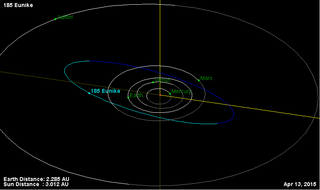
Eunike is a dark and very large main-belt asteroid, with an approximate diameter of 157 kilometres. It has a primitive carbonaceous composition.

Phthia is a bright-coloured, rocky main belt asteroid that was discovered by German-American astronomer Christian Heinrich Friedrich Peters on September 9, 1878 in Clinton, New York and named after Phthia, a region of Ancient Greece.
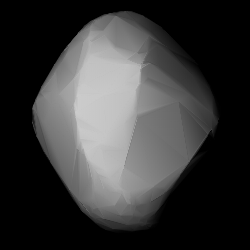
Medea is a very large main-belt asteroid that was discovered by Johann Palisa on February 6, 1880, in Pola, and was named after Medea, a figure in Greek mythology.
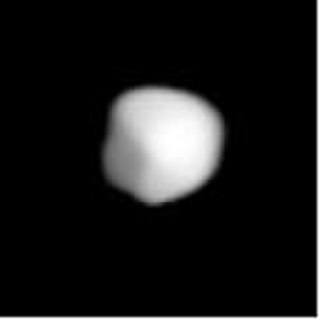
Athamantis is a fairly large main-belt asteroid that was discovered by the German-Austrian astronomer K. de Ball on September 3, 1882, in Bothkamp. It was his only asteroid discovery. The asteroid was named after Athamantis, daughter of Athamas the mythical Greek king of Orchomenus.
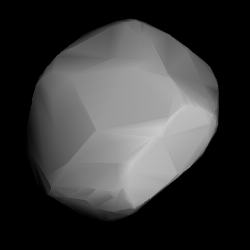
Hypatia is a very large main-belt asteroid that was discovered by Russian astronomer Viktor Knorre on July 1, 1884, in Berlin. It was the third of his four asteroid discoveries. The name was given in honour of philosopher Hypatia of Alexandria. Based upon the spectrum, it is classified as a C-type asteroid and is probably composed of primitive carbonaceous material. Like many asteroids of this type, its surface is very dark in colour.
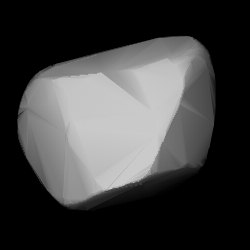
Asporina is a sizeable main-belt asteroid. It is classified as one of the few A-type asteroids.

Aline is a fairly large main belt asteroid that was discovered by Johann Palisa on 17 May 1887 in Vienna and is thought to have been named after the daughter of astronomer Edmund Weiss. It is a dark C-type asteroid and is probably composed of primitive carbonaceous material. 266 Aline is orbiting close to a 5:2 mean motion resonance with Jupiter, which is located at 2.824 AU.

Nenetta is an A-type asteroid with a diameter of 38 km. It was discovered by Auguste Charlois on 10 March 1890 in Nice, France. The asteroid is orbiting the Sun at a distance of 2.87 AU with an eccentricity (ovalness) of 0.204 and an orbital period of 4.87 yr. The orbital plane is inclined at an angle of 6.7° to the plane of the ecliptic.

California is an asteroid belonging to the Flora family in the Main Belt. It was discovered by Max Wolf on 25 September 1892 in Heidelberg, and is named for the U.S. state of California. This object is orbiting the Sun at a distance of 2.20 AU with a period of 3.26 yr and an eccentricity (ovalness) of 0.19. The orbital plane is inclined at an angle of 5.7° to the plane of the ecliptic.

Aspasia is a large main-belt asteroid that was discovered by French astronomer Auguste Charlois on 9 December 1895 in Nice. It is classified as a CX-type asteroid.
Chloris is a very large main-belt asteroid that was discovered by Auguste Charlois on January 7, 1896, in Nice. It is classified as a C-type asteroid and is probably composed of primitive carbonaceous material. The spectrum of the asteroid displays evidence of aqueous alteration. It is the namesake of the Chloris family of asteroids.
Patientia is approximately the 15th-largest asteroid in the asteroid belt with a diameter of 225 km. It was discovered by French astronomer Auguste Charlois on 4 December 1899, and assigned a provisional designation 1899 EY.
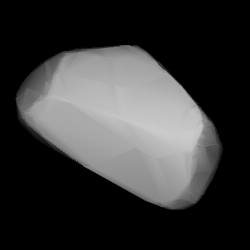
Iva is a main-belt asteroid orbiting the Sun, not to be confused with 1627 Ivar. It was discovered by American astronomer R. S. Dugan on 4 November 1902, and was named for Iva Shores, the young daughter of the family where he was staying in Heidelberg. This object is orbiting at a distance of 2.85 AU with a period of 4.82 yr and an eccentricity of 0.3. The orbital plane is inclined at an angle of 4.8° to the plane of the ecliptic.

Semiramis is a minor planet orbiting the Sun within the main asteroid belt. Photometric observations at the Mark Evans Observatory during 2014 gave a rotation period of 5.0689 ± 0.0001 hours. This value is in close agreement with previous studies. The spectrum shows it to be a stony S(IV)-type asteroid.


















